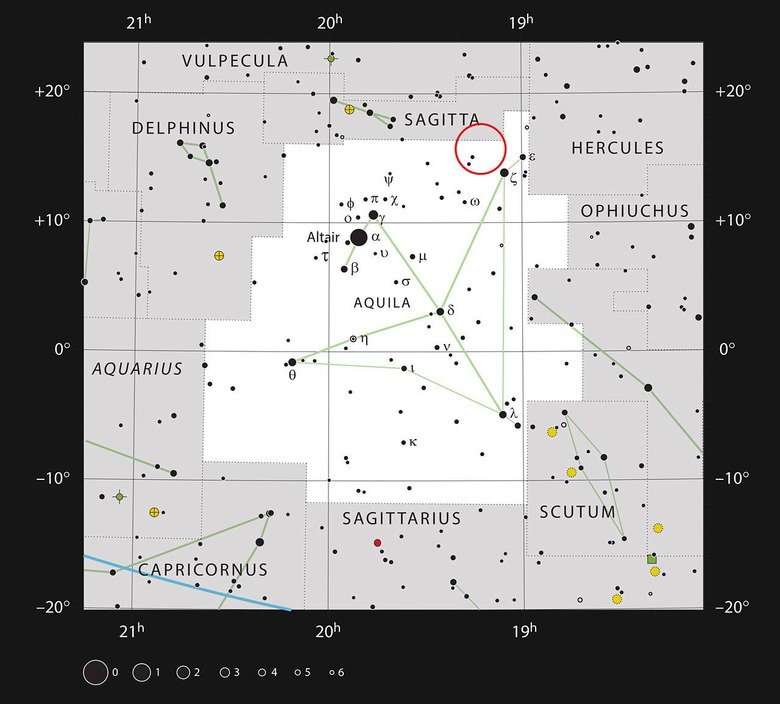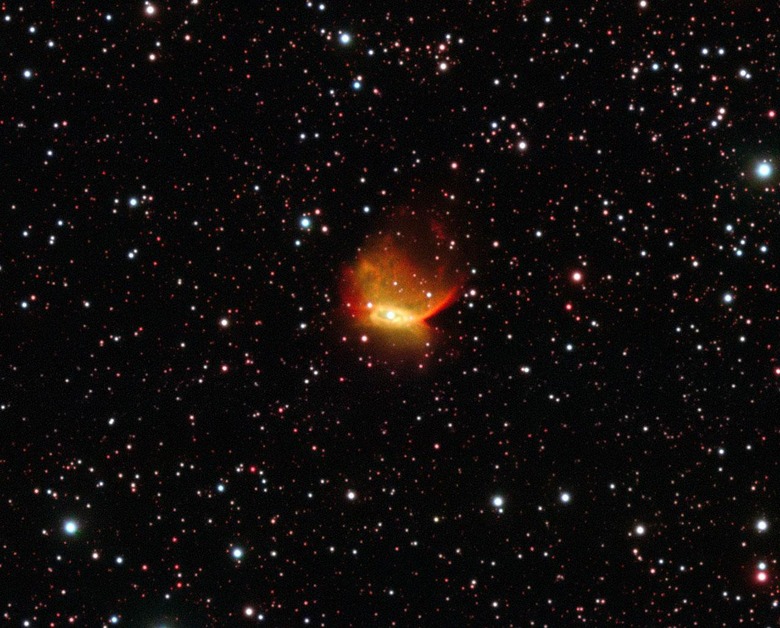Dwarf Stars Discovered On Collision Course
One of our favorite telescopes in the world – the ESO's Very Large Telescope (VLT), has aided in spotting a couple of stars set to collide. At the center of the planetary nebula Henize 2-428, two stars orbit one another. These two planetary bodies are both dwarf stars drawing ever-nearer to each other, eventually set to touch and create one massive explosion. A thermonuclear explosion, that is to say, with a Type "la" supernova to follow. Sadly, none of us living today will be around to see this event, as it'll take place some 700 years from now.
A team lead by Miguel Santander-García, Observatorio Astronómico Nacional, Alcalá de Henares, Spain; Instituto de Ciencia de Materiales de Madrid (CSIC), Madrid, Spain, has observed this close pair of stars. A team of astronomers using ESO facilities have teamed with telescopes in the Canary Islands to see this heavenly conglomeration.
Also on the team were Henri Boffin from ESO, Romano Corradi, researcher at the Instituto de Astrofísica de Canarias (Tenerife, IAC), and David Jones, ESO Fellow at the time the data was obtained.
At the ESO you'll see Boffin suggesting that "when we looked at this object's central star with ESO's Very Large Telescope, we found not just one but a pair of stars at the heart of this strangely lopsided glowing cloud."
"Further observations," added Corradi, "made with telescopes in the Canary Islands allowed us to determine the orbit of the two stars and deduce both the masses of the two stars and their separation."
"This was when the biggest surprise was revealed."

The image you see above shows the planetary nebula Henize 2-428 in the constellation of Aquila. This is where the star-crash is set to occur.
"Until now," said Jones, "the formation of supernovae Type Ia by the merging of two white dwarfs was purely theoretical. The pair of stars in Henize 2-428 is the real thing!"
While the image you see at the head of this article is an artist's rendering, the image you see below is a real-deal photo captured with the Very Large Telescope.

Above you'll see an "Image of the planetary nebula Henize 2-428 from the Very Large Telescope" as provided by the team as ESO.
"It's an extremely enigmatic system" , said Santander-García. "It will have important repercussions for the study of supernovae Type Ia, which are widely used to measure astronomical distances and were key to the discovery that the expansion of the Universe is accelerating due to dark energy."
Below you'll see another artist's impression, this time showing a Type la supernova in action.
The research paper involved in this finding can be found in the latest issue of Nature. You can see a PDF of the paper as well – the title of this paper is "The double-degenerate, super-Chandrasekhar nucleus of the planetary nebula Henize 2–428."
